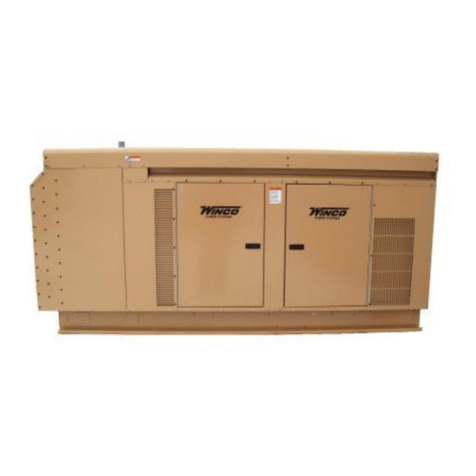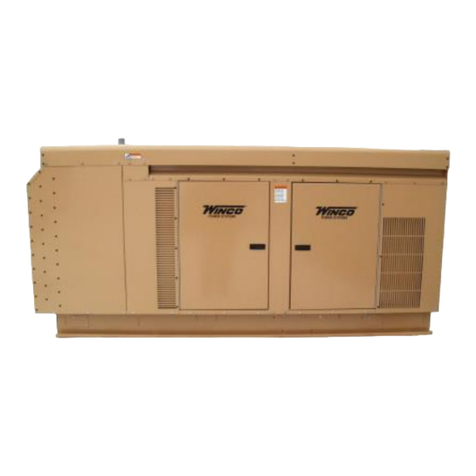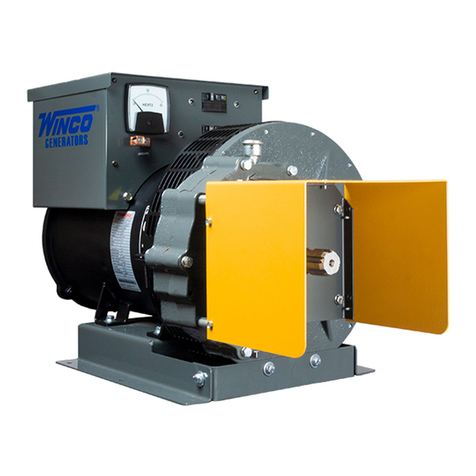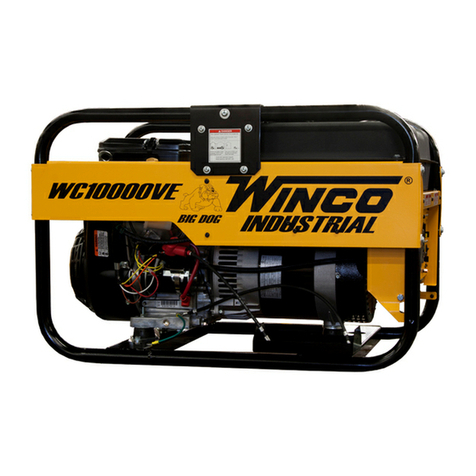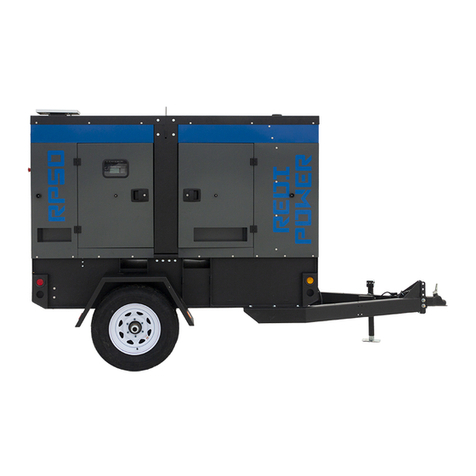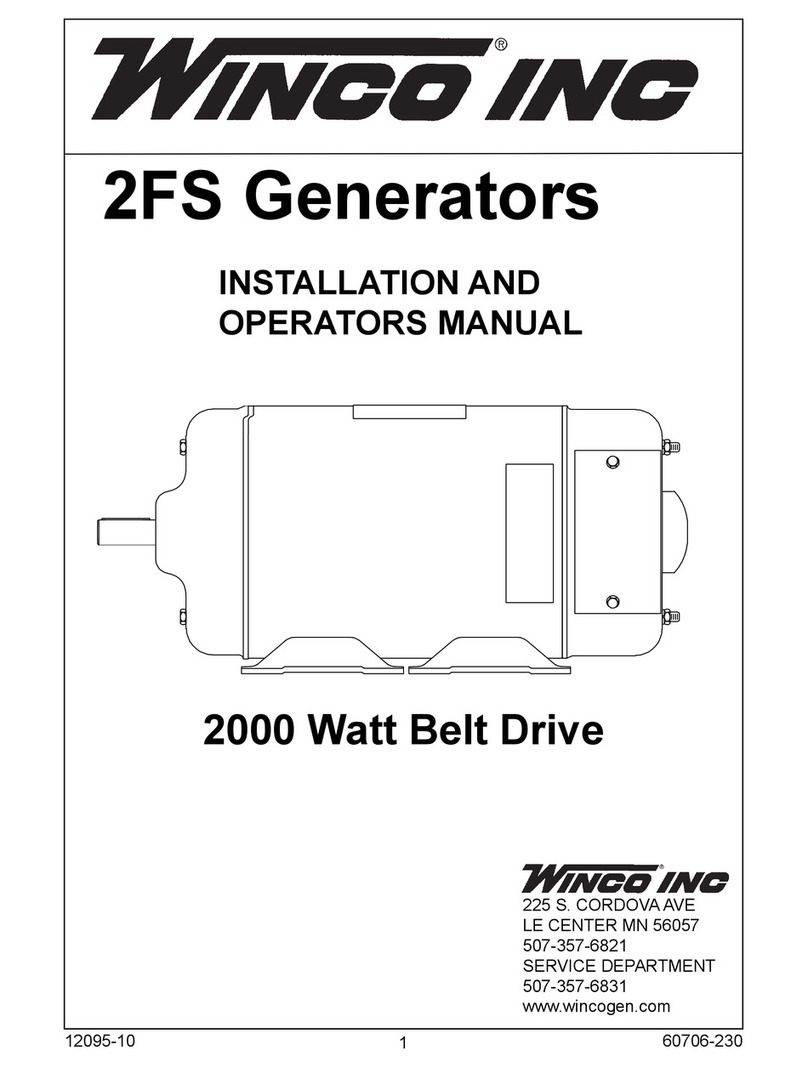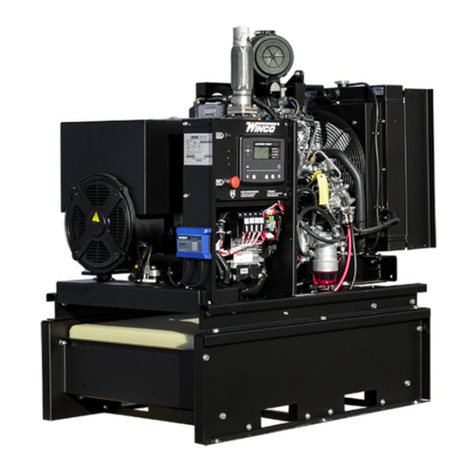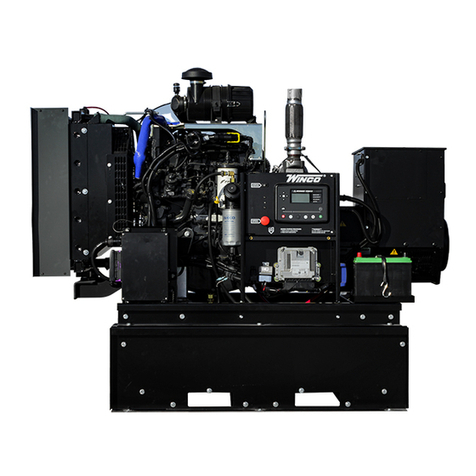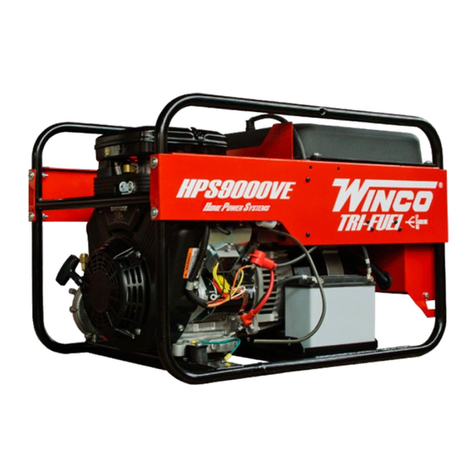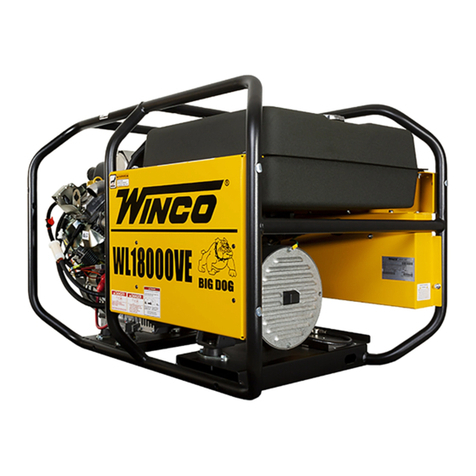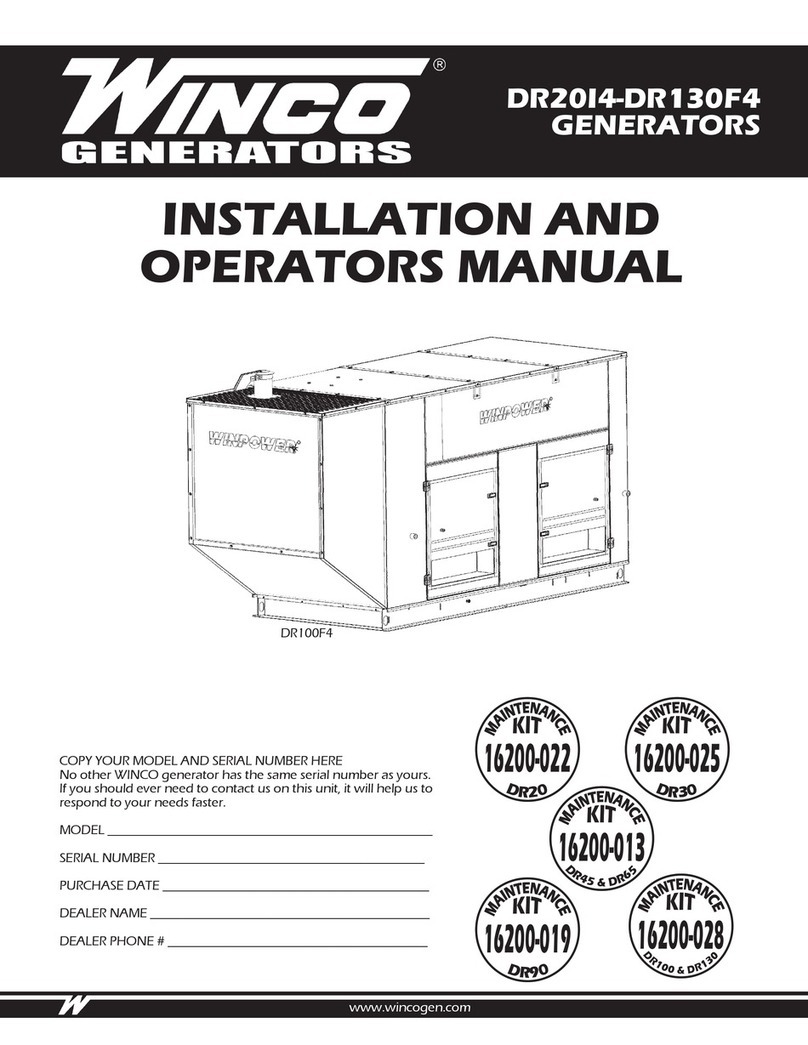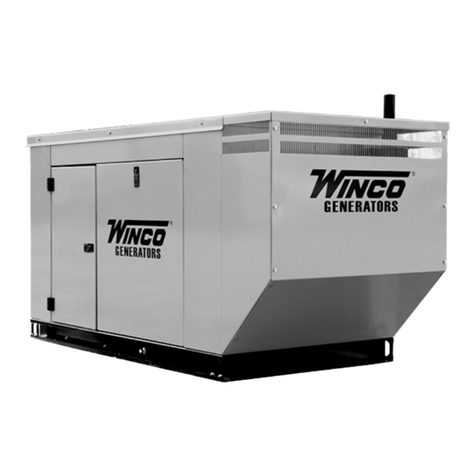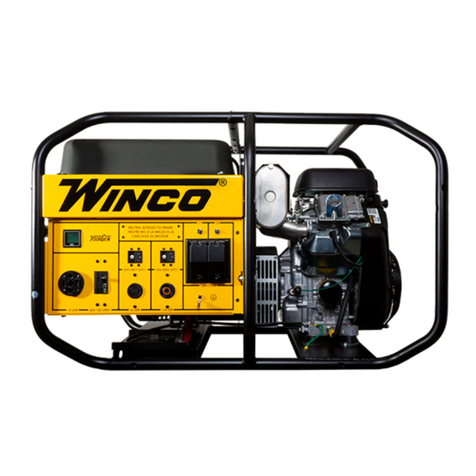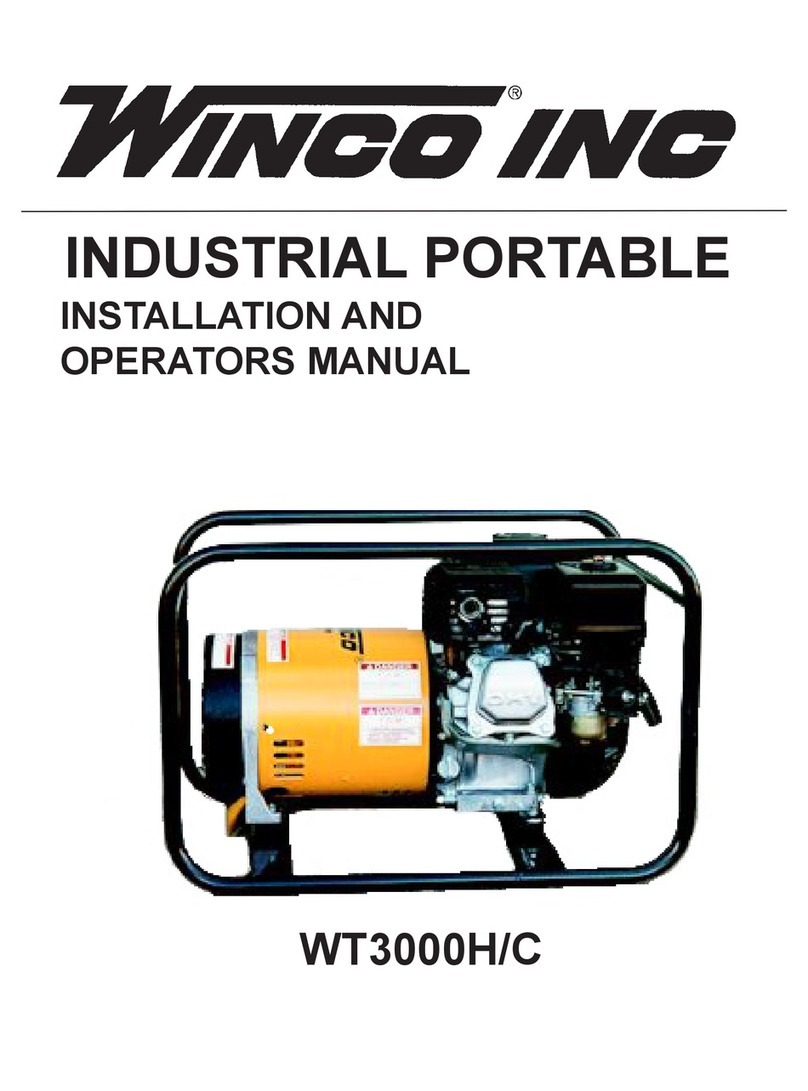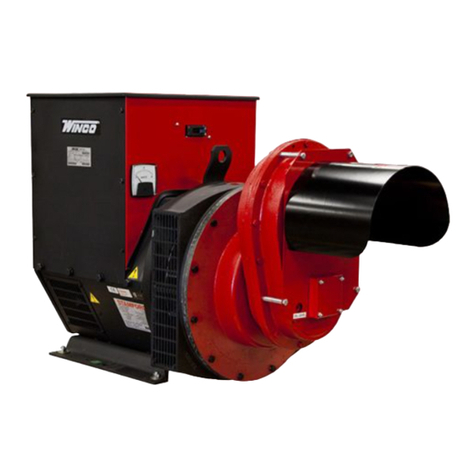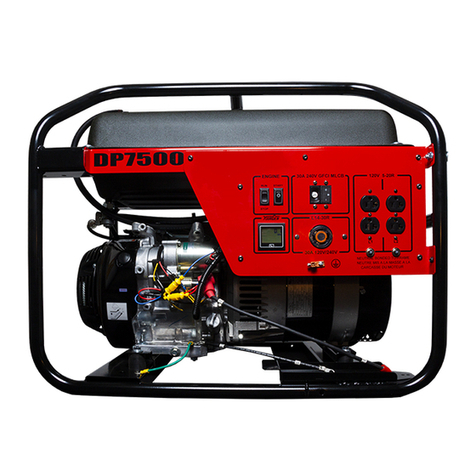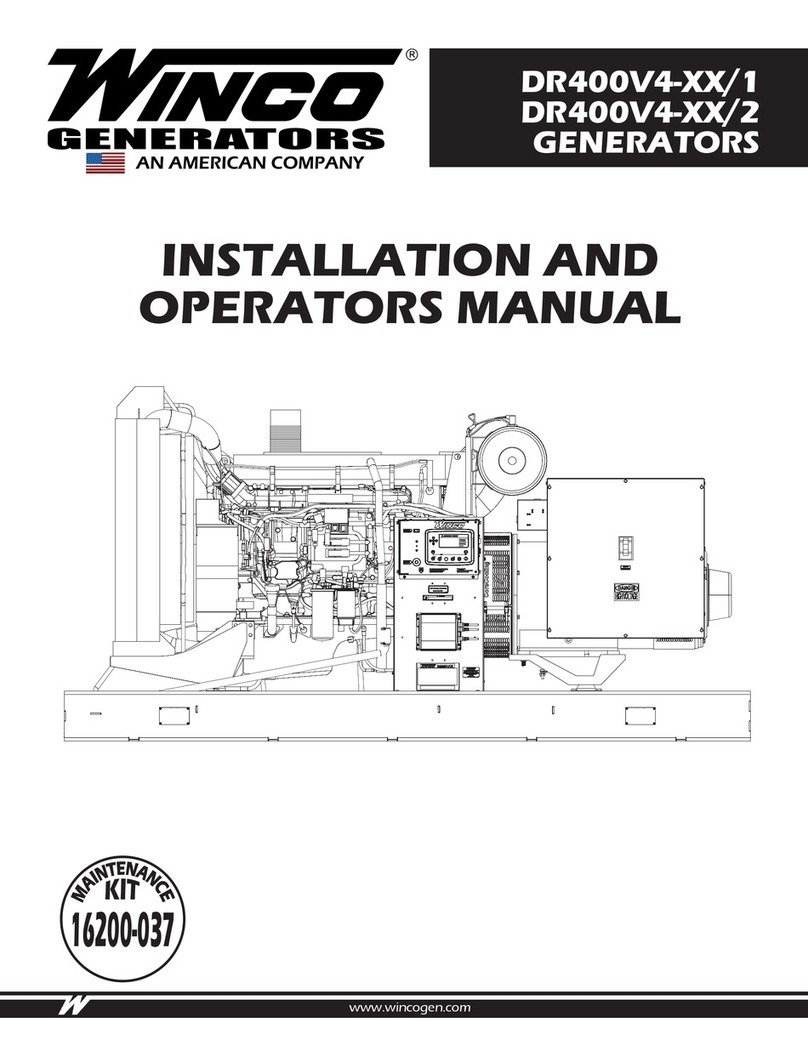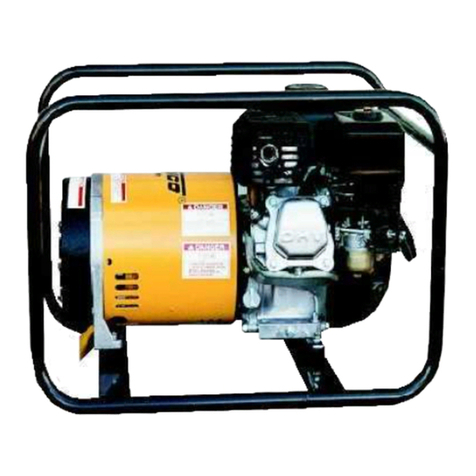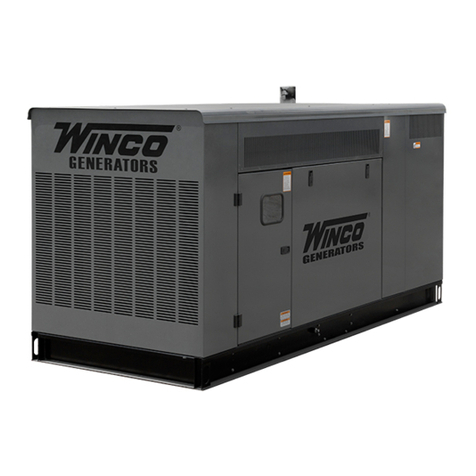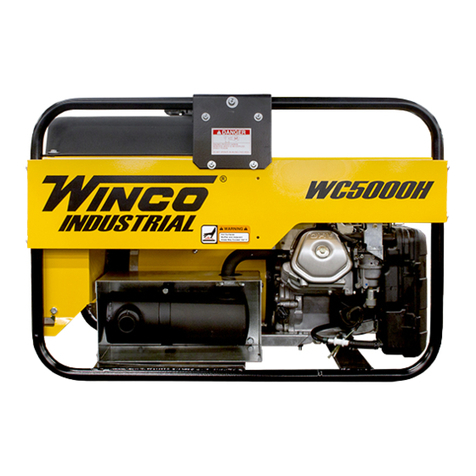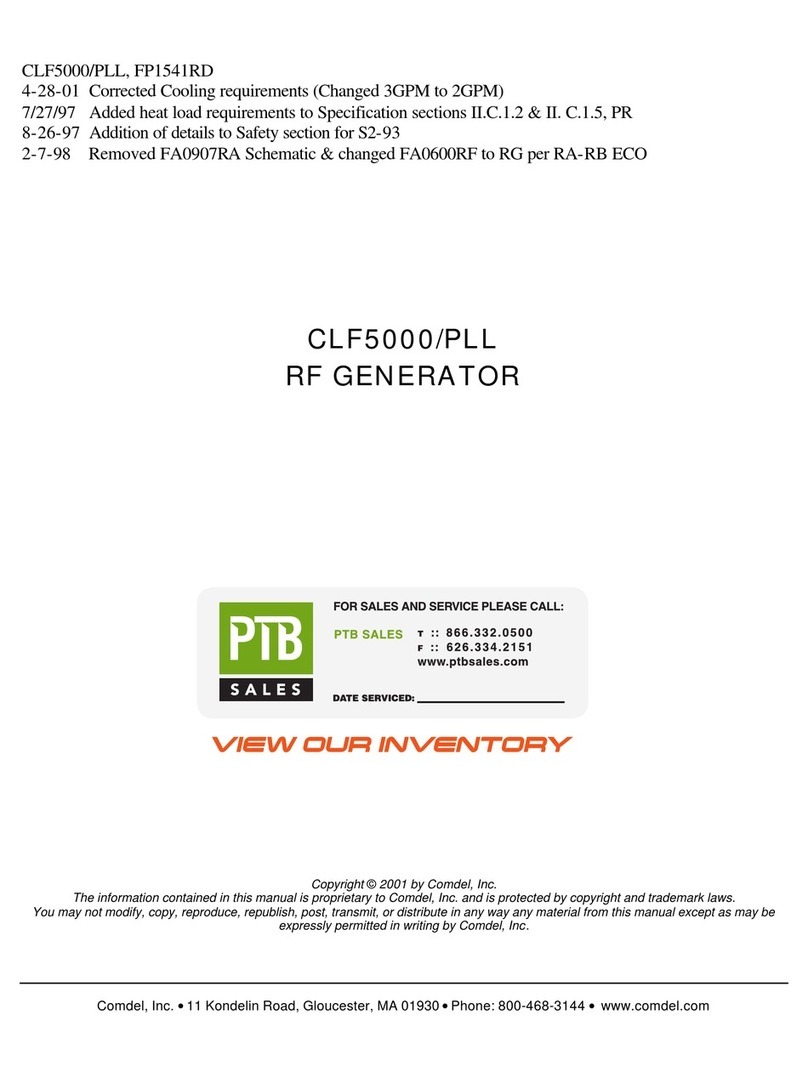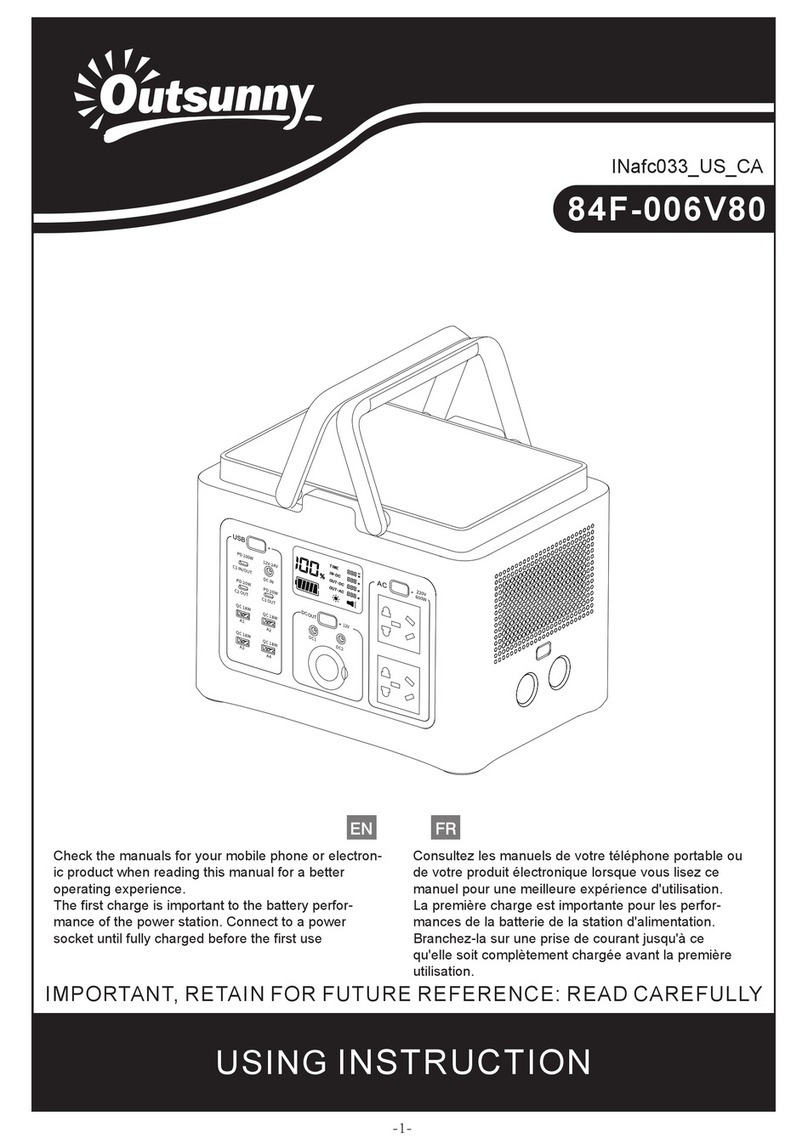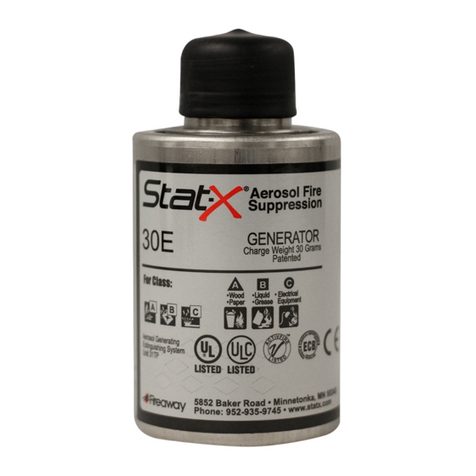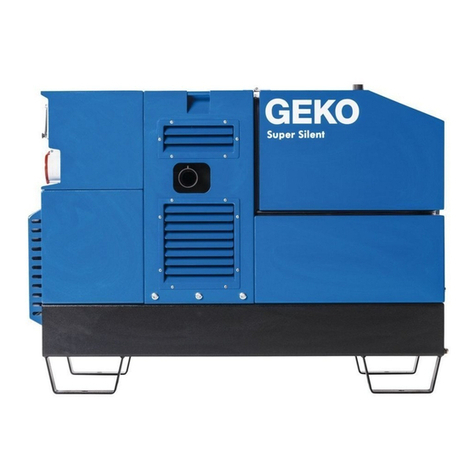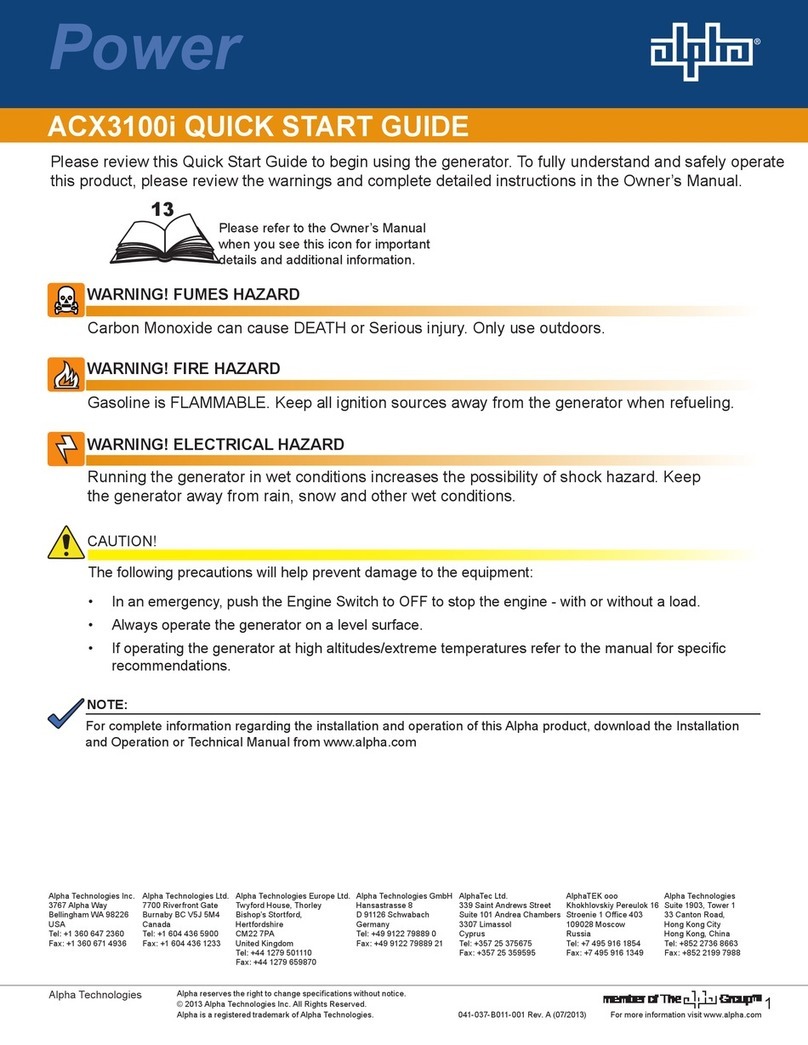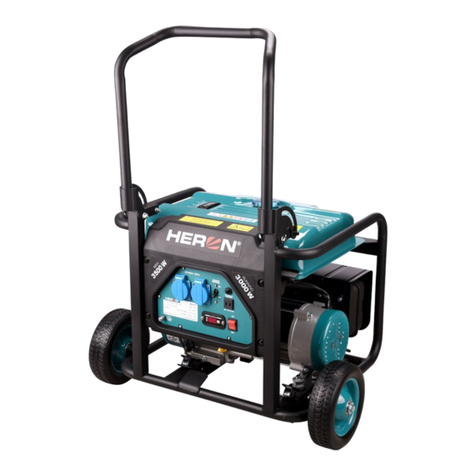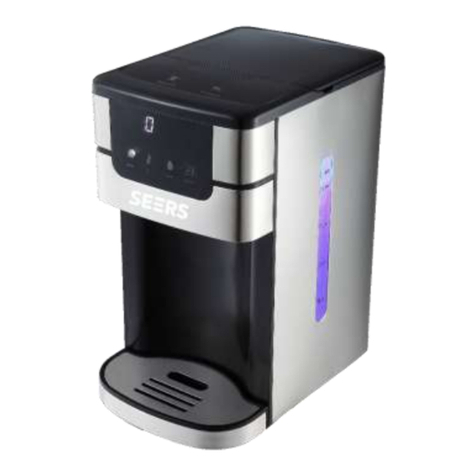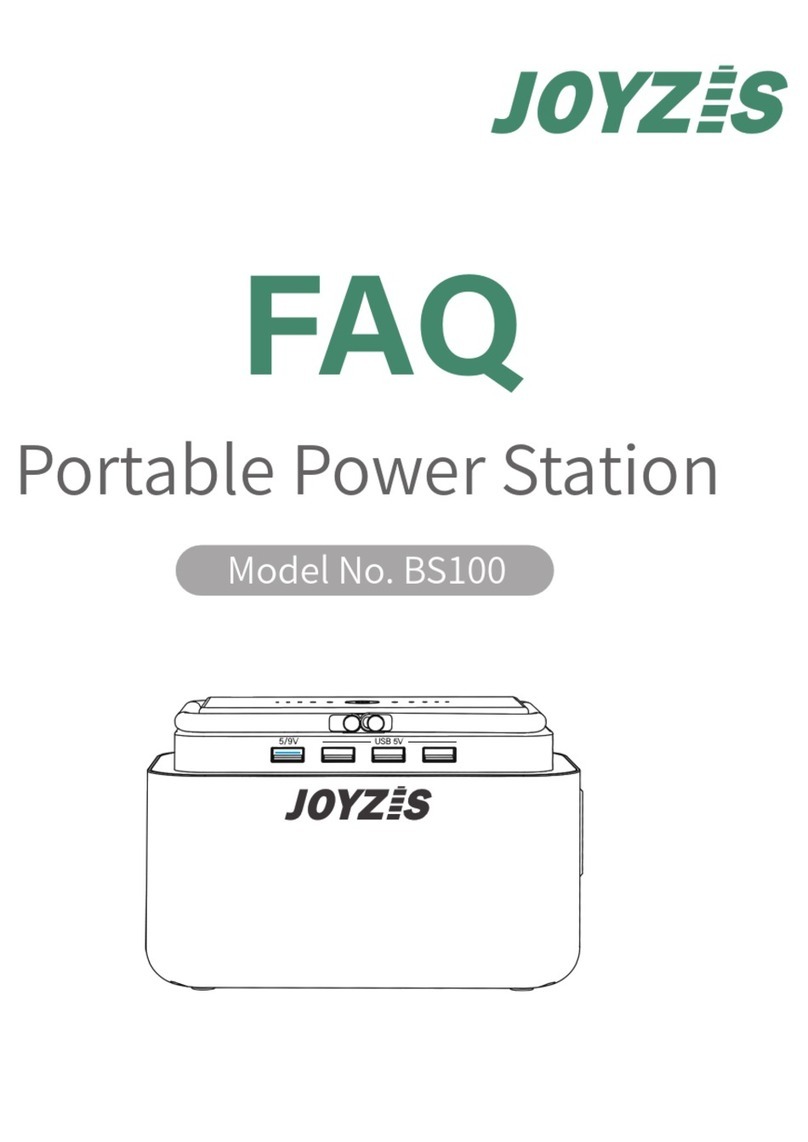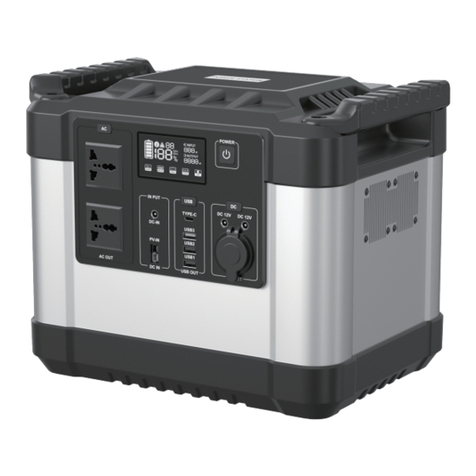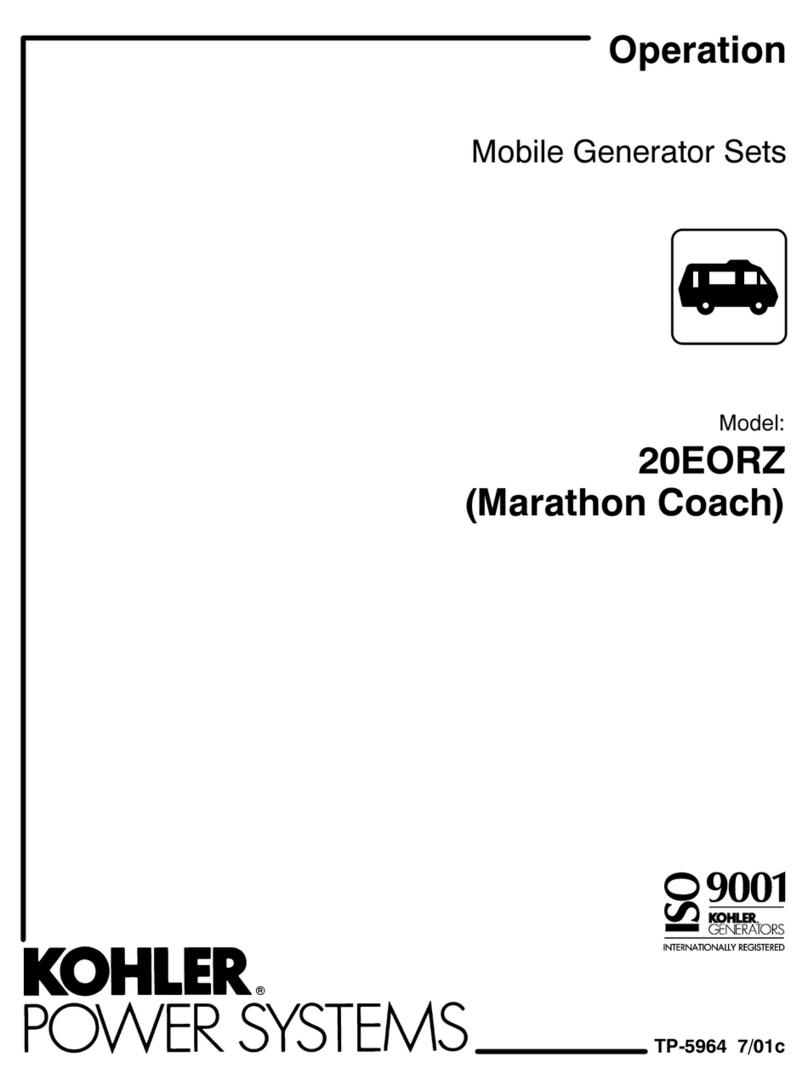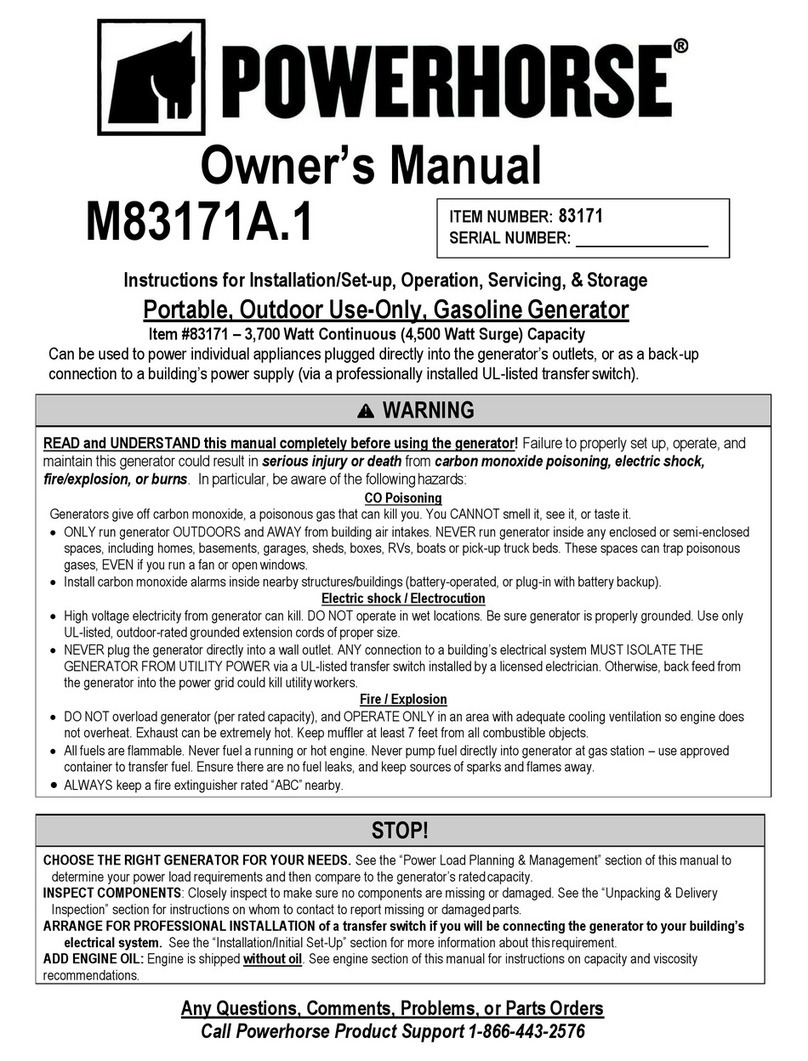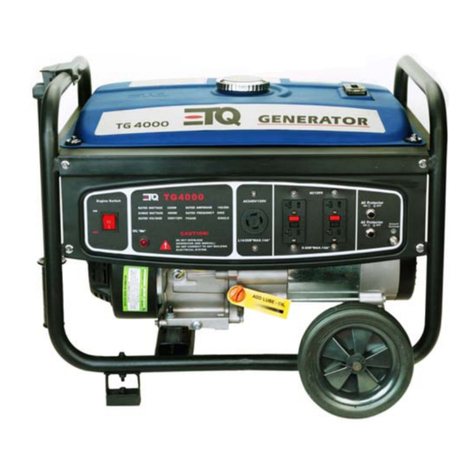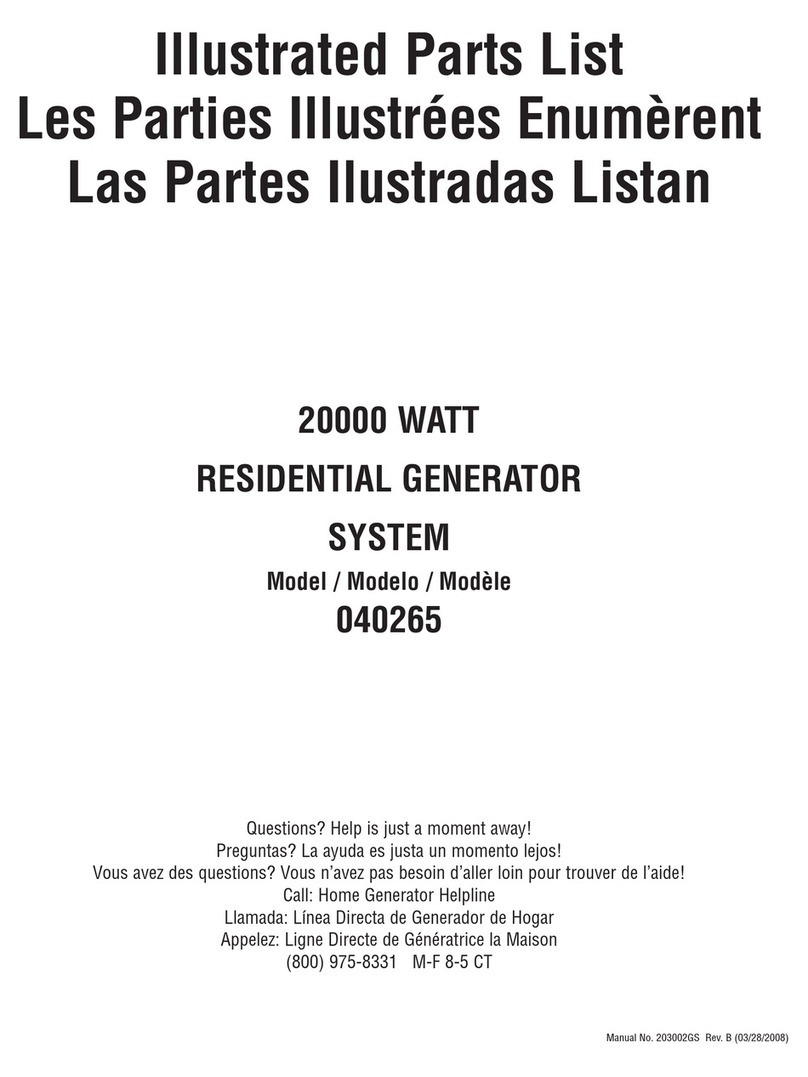
8OPM-114
REV B
COOLANT
Before starting the engine, check the coolant level in the radiator. If
it is low, rell as specied in the engine manufacturer’s maintenance
instructions. The radiator should be lled to about 1 inch below the ller
neck. For additional information on engine coolant requirements, see
engine manufacturer’s maintenance instructions.
INSTALLING THE BATTERY
CAUTION:
In the following battery installation procedure, check to be sure the
DSE 7310 MKII is in the “stop” position. This should be your last step
before initial start-up.
The RP25 is a 12 volt system and requires a single battery. The
batteries should be rated at a minimum of 650 CCA. Installation of the
highest CCA rated battery, within the correct BCI group, will increase
cold weather starting performance. Gel batteries should not be used
with the battery tender installed in the generator enclosure.
Installation and servicing of batteries must only be preformed or
supervised by personnel knowledgeable of batteries and the required
precautions. Keep unauthorized personnel away from batteries.
When installing or replacing batteries, use the proper group/size
starting battery. The battery should be a maintenance-free lead acid
design. Deep cycle batteries will not work for this application.
CAUTION: PERSONAL DANGER:
NEVER dispose a battery in a re. The battery is capable of exploding.
DO NOT open or mutilate the battery. Released electrolyte is known to
be harmful to the skin and eyes and to be very toxic.
These engine-generator sets are all NEGATIVE ground. Be very careful
not to connect the battery in reverse polarity, as this may short circuit
the battery charging system on the engine.
CAUTION:
A battery presents a risk of electrical shock and high short circuit
current. The following precautions must be observed when working
with batteries:
1. Remove watches, rings, and other metal objects.
2. Use tools with insulated handles.
3. Check both the battery cable ends and the battery posts to be
sure they are free of corrosion.
4. Always connect the battery positive cable rst and then connect
the battery negative cable. When removing the battery cables
from the battery, reverse the procedure, disconnect the negative
rst and then the positive cable.
5. Be sure all connections are tight and coat the terminals and cable
ends with dialectic grease.
WARNING:
The electrolyte is diluted sulfuric acid that is harmful to the skin
and eyes. It is electrically conductive and corrosive. The following
precautions must always be taken.
1. Always wear full eye protection and protective clothing.
2. Where electrolyte contacts skin, wash off immediately with water.
3. If electrolyte contacts the eyes, ush thoroughly and immediately
with water and seek immediate medical attention
4. Spilled electrolyte is to be washed down with an acid neutralizing
agent. A common practice is to use a solution of one pound
of bicarbonate of soda (baking soda) to one gallon of water.
The bicarbonate of soda solution is to be added until the evidence
of reaction (foaming) has ceased. The resulting liquid is to be
ushed with water and the area dried.
DANGER: EXPLOSIVE FIRE RISK:
1. Never smoke when near batteries.
2. Do not cause a ame or spark in the battery area.
3. Always discharge static electricity from your body before touching
batteries by rst touching a ground metal surface.
SERVICING BATTERIES
Batteries used on these units may, over time, lose water. This
is especially true if you are using a trickle charger to maintain
your battery. Different types of batteries require various types
of maintenance. Refer to the battery manufacturer for specic
recommendations.
NOTE: Always make sure that a new battery is fully charged before
installing it on a generator set. Failure to do so can cause damage to
the engine control module in the generator set.
All connections must be clean and tight. Depending on your battery
type, check the electrolyte in the battery periodically to be sure it is
above the plates. Never allow the battery to remain in a discharged
condition.
CAUTION: EQUIPMENT DAMAGE:
Never attempt to jump start this engine. If the battery should
accidentally become discharged, disconnect the battery cables and
recharge the battery before attempting to start the unit. Boost/jump
starting this unit improperly will result in PERMANENT DAMAGE TO
THE ENGINE CONTROL MODULE (ECM).

